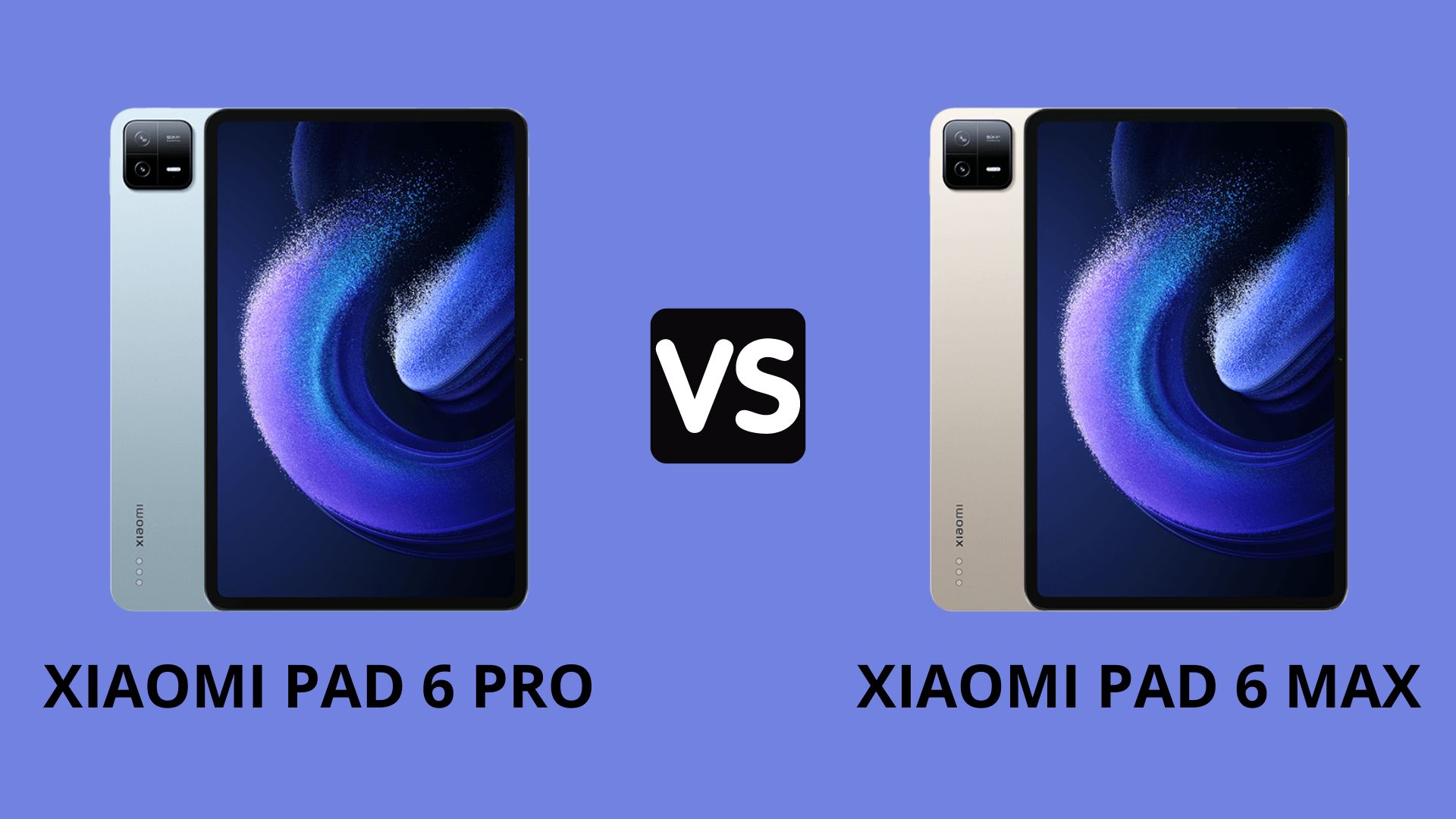

Xiaomi recently released two impressive tablets, the Xiaomi Pad 6 Pro and the Xiaomi Pad 6 Max. These tablets offer a range of features and specifications to suit different user preferences. In this article, we’ll compare the Xiaomi Pad 6 Pro and Xiaomi Pad 6 Max in terms of design, display, performance, camera, battery and other key features to help you make an informed decision.
Both tablets feature a sleek, modern design, with the Xiaomi Pad 6 Pro offering a slim profile and high-end build quality. On the other hand, the Xiaomi Pad 6 Max boasts a larger format with a 14-inch LCD screen and slim bezels, offering an immersive visual experience.
The Xiaomi Pad 6 Pro features an 11-inch IPS LCD screen with a resolution of 2880 x 1800 (WQHD+) and a density of around 309 pixels per inch; this slate has a refresh rate of up to 144 Hz. The Xiaomi Pad 6 Max, meanwhile, has a 14-inch IPS LCD screen with a resolution of 2880×1800 (WQHD+) and a refresh rate of 120 Hz. As a result, the Xiaomi Pad 6 Pro and Xiaomi Pad 6 Max have the same 2880×1800 (WQHD+) resolution, but the Xiaomi Pad 6 Max has a larger 14-inch screen size. The density of this screen is 242 ppi.
Both tablets offer high-quality displays, with the Xiaomi Pad 6 Pro offering detailed visuals and vibrant colours. The Xiaomi Pad 6 Max, with its 14-inch LCD screen, offers a larger display that enhances productivity and multimedia consumption.
Performance-wise, they’re pretty much on a par. The Xiaomi Pad 6 Pro and the Xiaomi Pad 6 Max have the same Qualcomm Snapdragon 8+ Gen 1 chip with the same memory configurations; only the Pad 6 Max model offers an additional 16 GB memory option. The other configurations are as follows:
Both tablets are equipped with powerful processors, ensuring smooth multitasking and lag-free performance. The Xiaomi Pad 6 Max’s enhanced specification options offer improved performance for demanding tasks. Both run Android 13 with the in-house MIUI 14 software overlay.
The Xiaomi Pad 6 Pro features a dual-camera setup with a 50MP main sensor and a 2MP depth sensor. The camera setup is capable of capturing high-quality images with good detail and colour accuracy. The front camera is a 20 MP sensor, suitable for video calls and selfies.
The Xiaomi Pad 6 Max also features the same dual-camera setup (50 MP main sensor and 2 MP depth sensor). On the front, the tablet has a 20 MP main camera combined with a 3D ToF sensor for advanced face unlocking. There’s also an authorisation light that flashes red when an application tries to access sensitive data.
The Xiaomi Pad 6 Pro has an 8,600mAh battery, while the Xiaomi Pad 6 Max has a larger 10,000mAh battery. Both tablets support 67W fast charging, but the Pad 6 Max also offers 33W reverse wired charging.
Both tablets offer a range of features, with the Xiaomi Pad 6 Pro being a good value Android tablet that rivals more expensive competitors. The Xiaomi Pad 6 Max, with its larger screen size and powerful performance, is designed to handle demanding tasks.
In conclusion, both the Xiaomi Pad 6 Pro and Xiaomi Pad 6 Max are impressive tablets with their own features and specifications. The Xiaomi Pad 6 Pro offers a sleek design, high-quality screen, powerful performance and a capable camera setup. On the other hand, the Xiaomi Pad 6 Max benefits from a larger screen size and improved specifications for enhanced productivity and performance.
If we had to sum up the main changes between the Xiaomi Pad 6 Pro and the Xiaomi Pad 6 Max, I’d say that the Xiaomi Pad has all the features of the Xiaomi Pro but in a bigger slate with a better battery.
See also:
The Windows 11 update error can occur for several reasons, such as corrupted files, connectivity issues, or conflicts with third-party…
The "You don’t currently have permission to access this folder" error often appears when you try to access a folder…
When developing Flutter applications, it's common to encounter errors related to SDK version compatibility. One of these common errors is…
During the installation of Windows, you may encounter an error indicating that the selected disk is not compatible with the…
The error "Windows could not start the Windows Update service on the local computer" occurs when the operating system fails…
The Windows Update Service is essential for keeping your system up to date with the latest security and performance improvements.…